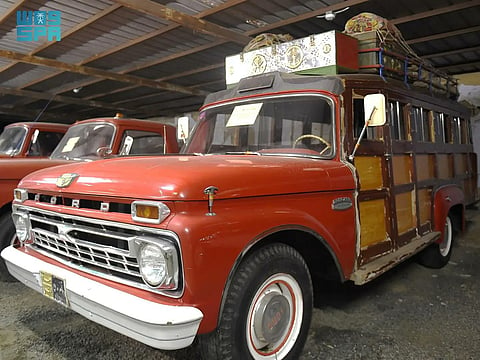Heritage on wheels: The iconic red truck that connected generations in Saudi Arabia
An enduring symbol of heritage that shaped trade, travel, and tradition in Saudi Arabia

From the 1940s to the 1970s, a distinctive red truck — locally referred to as a lorry — became an enduring symbol of heritage and transformation across Saudi Arabia and the wider Gulf region.
In an era marked by limited travel options and harsh conditions, these trucks served as lifelines, linking remote villages to major towns and cities.
“Residents and pilgrims heavily depended on the red trucks for long-distance travel, often embarking on journeys that spanned several days,” said Saudi historian Abdullah Al Zahrani while speaking to the Saudi Press Agency.
He noted that the vehicles offered families a new level of comfort, marking a turning point in regional transportation.
Beyond ferrying passengers, the red truck played a vital economic role. It transported food supplies to markets and helped merchants move goods such as dates, spices, livestock, and textiles — boosting trade and connecting rural economies.
Salem Al Abdali, a local resident whose father once drove one of these trucks in villages south of Taif, vividly remembered its handcrafted features: the bright red paintwork, a wooden sunroof made of juniper, stitched canvas roofing, and wooden floors.
He noted that these trucks became cherished alternatives to camels, forming part of the region’s cultural fabric through tales, chants, and memories shared during journeys. Some drivers, he added, even offered their services for free, reflecting the era’s strong sense of community and solidarity.
Sign up for the Daily Briefing
Get the latest news and updates straight to your inbox






